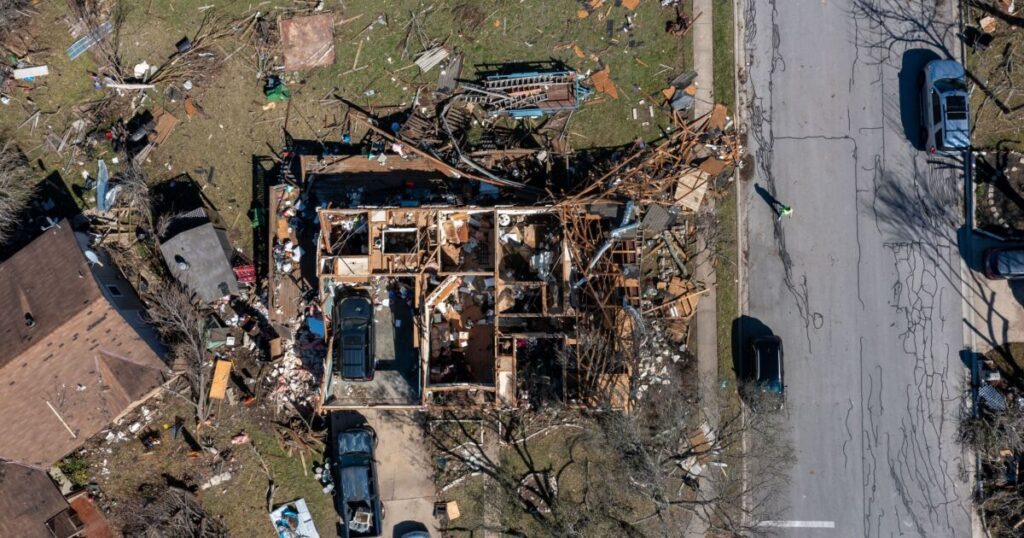Emerging tech helps insurers prevent claims chaos during CAT events

Claims after catastrophic events often place insureds and insurers into uncharted territory. Insurance companies are typically well suited to handle day-to-day claims, and the process runs smoothly. But when a catastrophic event occurs, everyone scrambles. Carriers struggle to meet demand as claim counts surge. Claimants need help quickly but are forced to wait as insurers and contractors allocate their limited resources.
For insurers, increasingly volatile weather patterns in recent years have made preparing resources even more difficult. After an event occurs, finding enough qualified adjusters to quickly remediate and mitigate loss and estimate damages is a herculean task. Enter emerging technologies — such as drones and generative AI tools — which can boost insurers’ claims capabilities, providing faster and more customer-friendly experiences.
With every catastrophic event, insurers face many challenges. The large number of claims can push processes to the limits. It can be difficult to get to the impacted area. Once they do get in, there is a shortage of adjusters, and finding skilled people familiar with the affected area can be challenging. Catastrophic events also fuel fraud, and third parties, such as roof repair companies, can perform work before the insurer finishes its assessment, creating more costs and more challenges to resolving the claim.
Tech-assisted claims processes can alleviate some of the challenges insurers face. Here are several ways insurers are using emerging technologies to improve the claims experience:
Preparing now for claims later
Many insurers are already using catastrophe (CAT) modeling to manage exposure and identify risks of particular events to their customers. The challenge is that several CAT modeling algorithms over-rely on historical data, which might not be as accurate given the evolving nature of natural catastrophes. Incorporating AI into CAT modeling enables insurers to use current data and additional data sources to predict the risks more accurately.
Generative AI can notify customers via voice or text about an impending hurricane and help them take precautions. With advanced weather models, insurers have better insight into where the storm will hit. Generative AI tools can identify clients at high risk for particular types of damage. Gen AI can also be used to develop custom client communications quickly. For example, a weather model might indicate that an area with a moderate flood risk will receive a large amount of rainfall. The insurer can send an automated text or voicemail advising customers in the area.
Technology-powered claims can streamline post-storm experience
Chaos continues well after a storm passes. Those impacted want to get answers as quickly as possible. Claims management teams can ease their workloads, and insureds can get answers more quickly using technology.
AI solutions can triage first notices of loss, enabling insurers to prioritize customers with significant damage that may worsen, such as large holes in roofs, over those with less critical issues, such as missing window shutters. Chatbots and voice assistants can be used to help customers get answers faster. While insureds will want to connect with humans during their claims process, simple questions about policy limits and types of damage covered can be answered quickly by chatbots, preventing the customer from waiting on hold for a long time.
Insurance organizations can use virtual adjusting technology to streamline the adjusting process. With these solutions, insureds can capture the damage using their smartphones. AI technology can then analyze this footage to assess the damage area. AI solutions can also expedite claims by automating routine communication between the adjuster, the insurer and the claimants. AI can help insureds get updates faster by summarizing the pages of claims documents and notes and creating a status update.
Beyond AI solutions, drones can give insurers quicker access to areas that might be inaccessible after a storm. A hurricane could wash out a bridge to an island community, or a flood might make it impossible to access a certain area, preventing adjusters from getting to properties. Drones can access these regions and take pictures of the damage, allowing customers to start the claims process while they wait for in-person adjusters to have access to the area.
Most customers judge their insurance provider by how they handle the claims process. While insureds still highly value interaction with humans during a claim event, taking advantage of technologies can ease workloads and give claims management teams more time to focus on complex issues. With the help of AI and other tools, insurers can provide a more efficient and effective claims experience this hurricane season.
See MoreModernizing claims technologyHow technology is changing the claims experienceCan we use technology to predict the weather?



